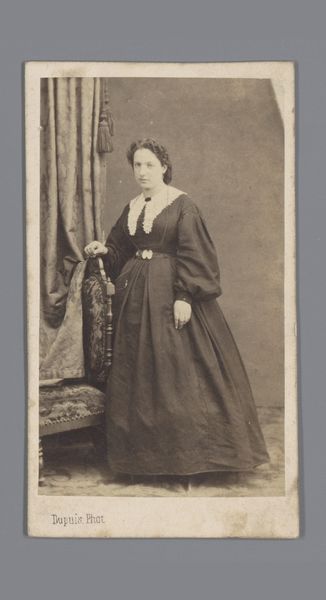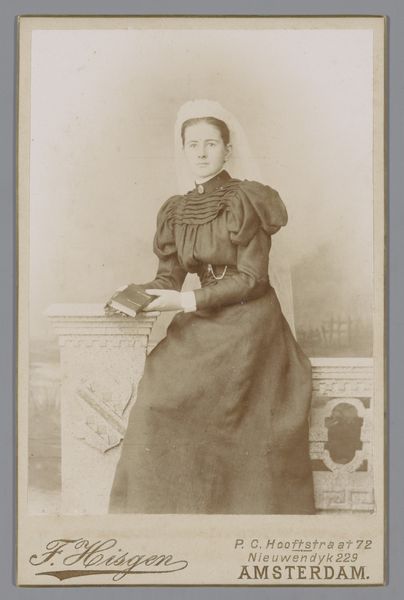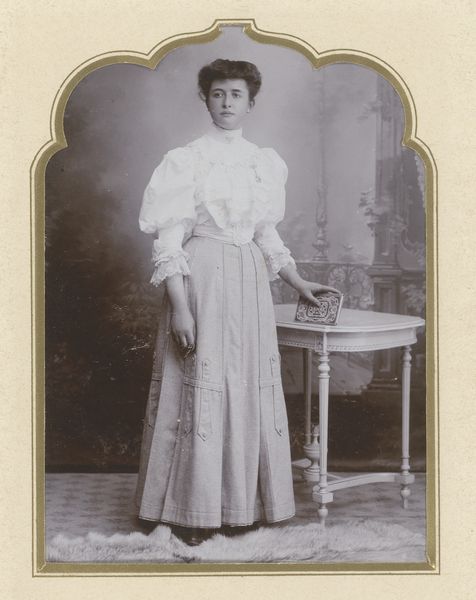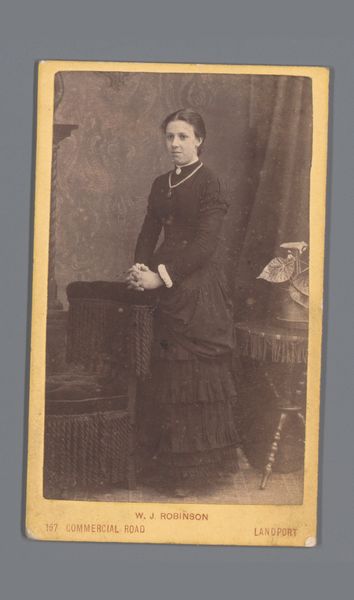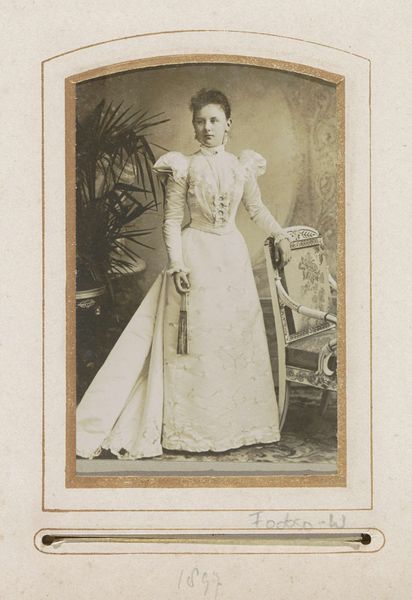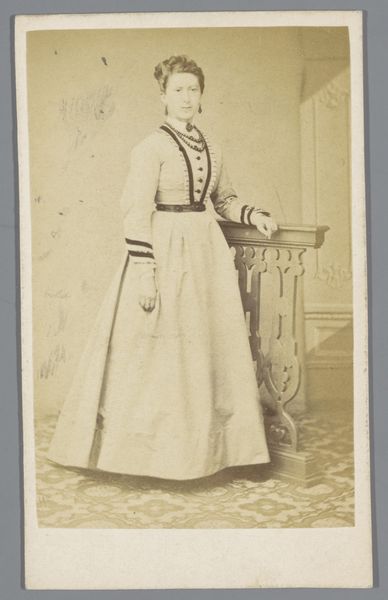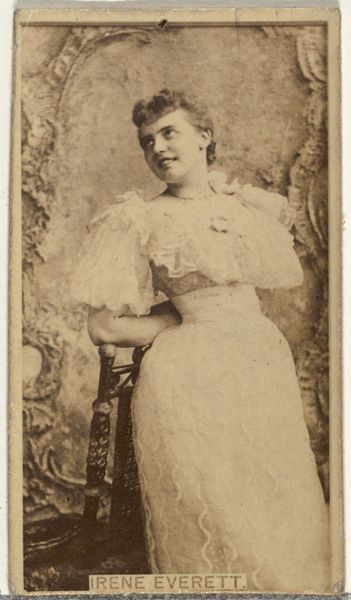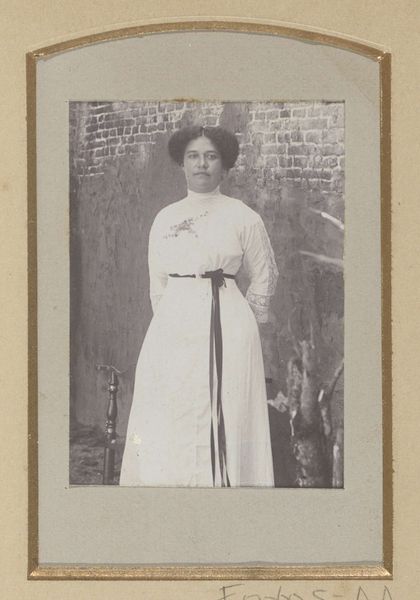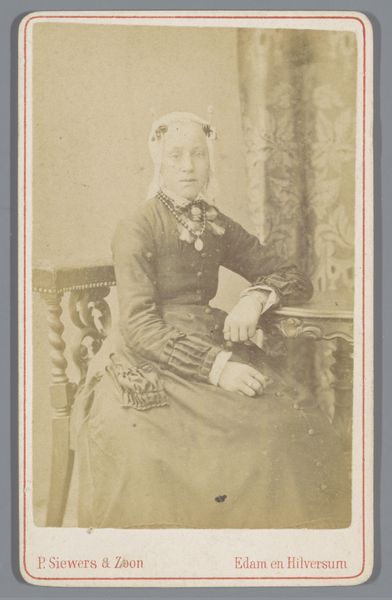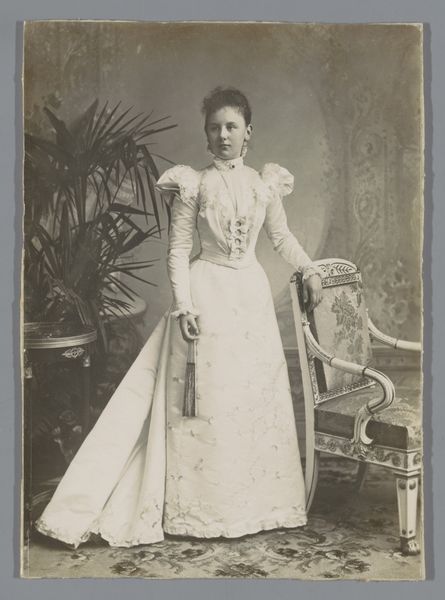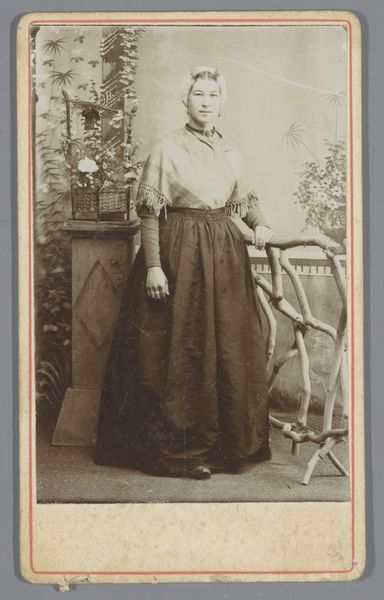
photography
#
portrait
#
photography
#
historical fashion
#
genre-painting
#
academic-art
Dimensions: height 165 mm, width 107 mm
Copyright: Rijks Museum: Open Domain
Curator: Looking at this portrait, the immediate feeling is one of solemnity, a quiet observation of girlhood transitioning into something more… perhaps adulthood as perceived through a religious lens. Editor: This photograph, taken sometime between 1880 and 1900 by R. Boëlle, presents an unknown girl in her communion dress. The style reflects the academic approach to portraiture prevalent at the time, but beyond its aesthetic qualities, I find it incredibly revealing of broader cultural values. Curator: I see what you mean, although focusing just on the aesthetic—the stark white of her dress against the sepia tones— there’s something so simple in its construction. The fabric looks quite heavy; you can imagine how restrictive it must have been to wear for so long on such a significant day. Editor: Exactly! Think about the material culture surrounding first communion in that era. The dresses, often handmade or purchased at considerable expense, signified not just religious devotion, but also social standing within the community. Photography itself was becoming increasingly accessible, transforming religious milestones into public spectacles, mediated through imagery and consumption. Curator: I hadn’t considered the impact of accessibility on the medium; it’s curious that you mention this performative aspect because that stool the child stands on strikes me, with its plush upholstery, and how religion often provided visual crutches for upward mobility. What were the politics embedded in this particular mode of portraiture at the time? Editor: These studios frequently mass-produced settings such as these to create symbolic images. This piece, for example, would reflect aspiration towards a certain social class in terms of religion. There are clear political motivations in reinforcing ideas of morality linked to class as photography democratised access to image-making. Curator: So much can be read into the texture and production; a dialogue that extends beyond her expression or formal elements. I'm thinking of the social conditions from which that material was birthed. Fascinating! Editor: It definitely underscores how social and economic factors shape not only religious practices but the very representation of identity. It also reminds us of how photographic images act as tools for communicating complex messages.
Comments
No comments
Be the first to comment and join the conversation on the ultimate creative platform.
